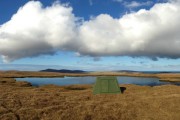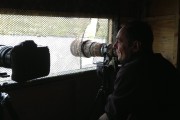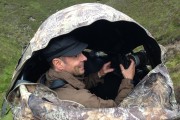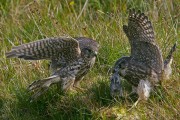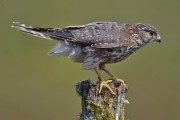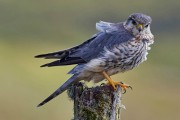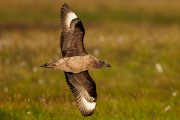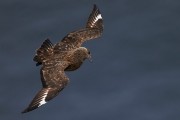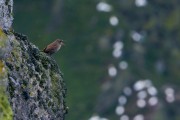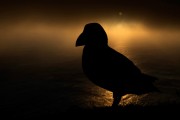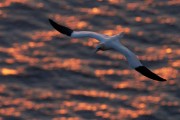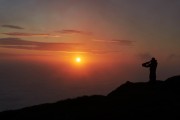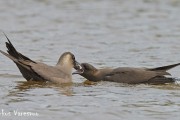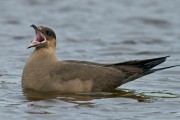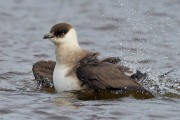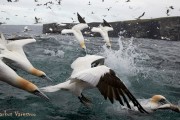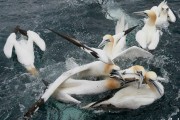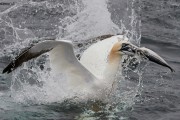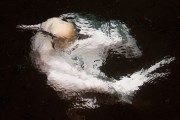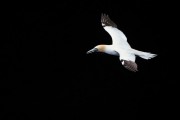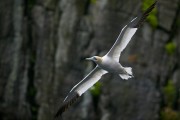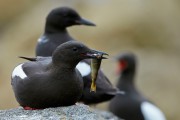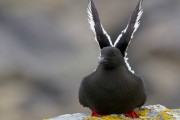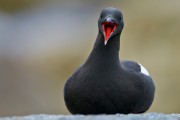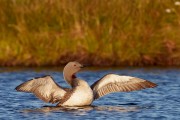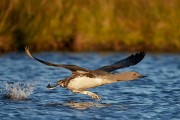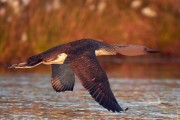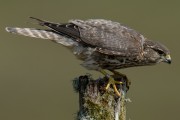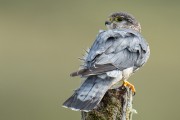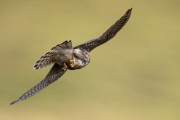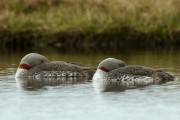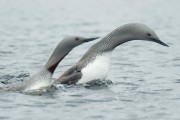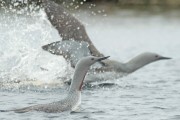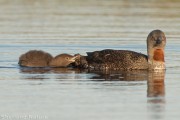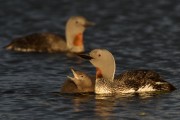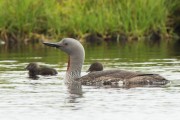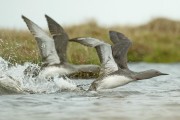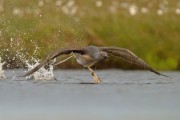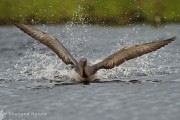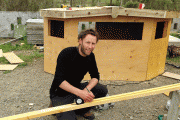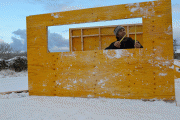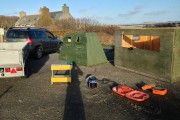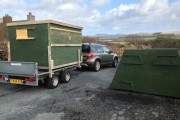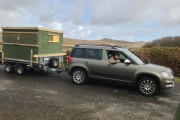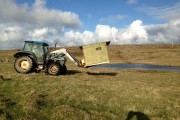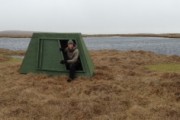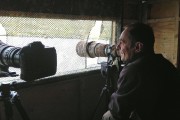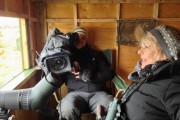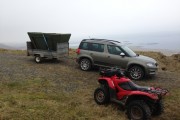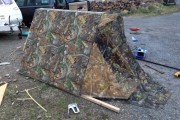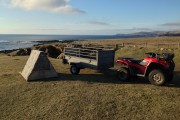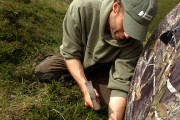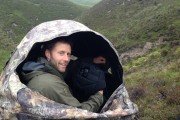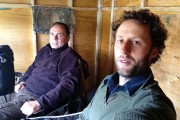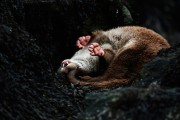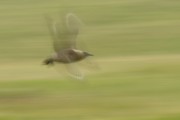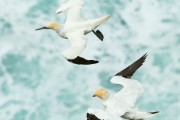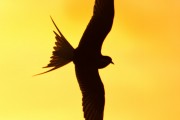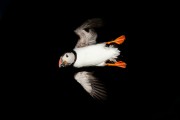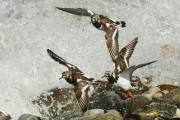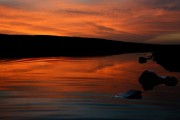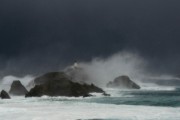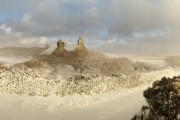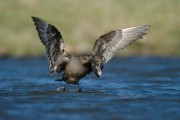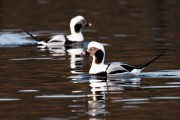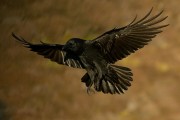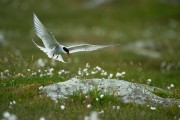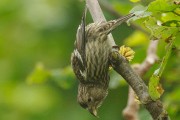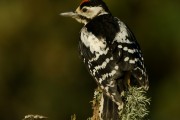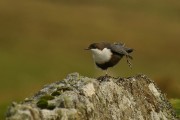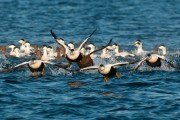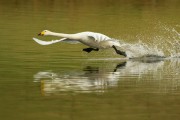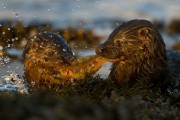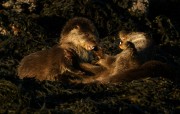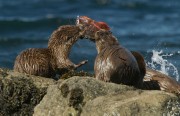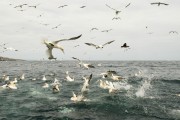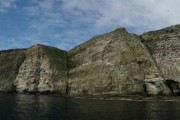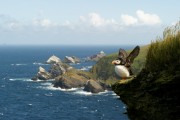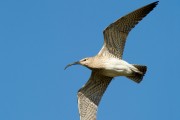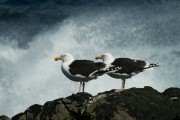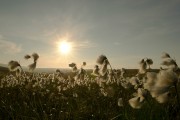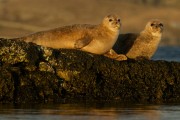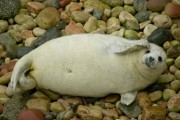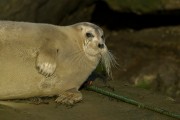Archive for the ‘Photography’ Category:
A week on Shetland in July 2014 by Markus Varesvuo
Posted by Markus Varesvuo on Wednesday 30th July 2014 | Photography
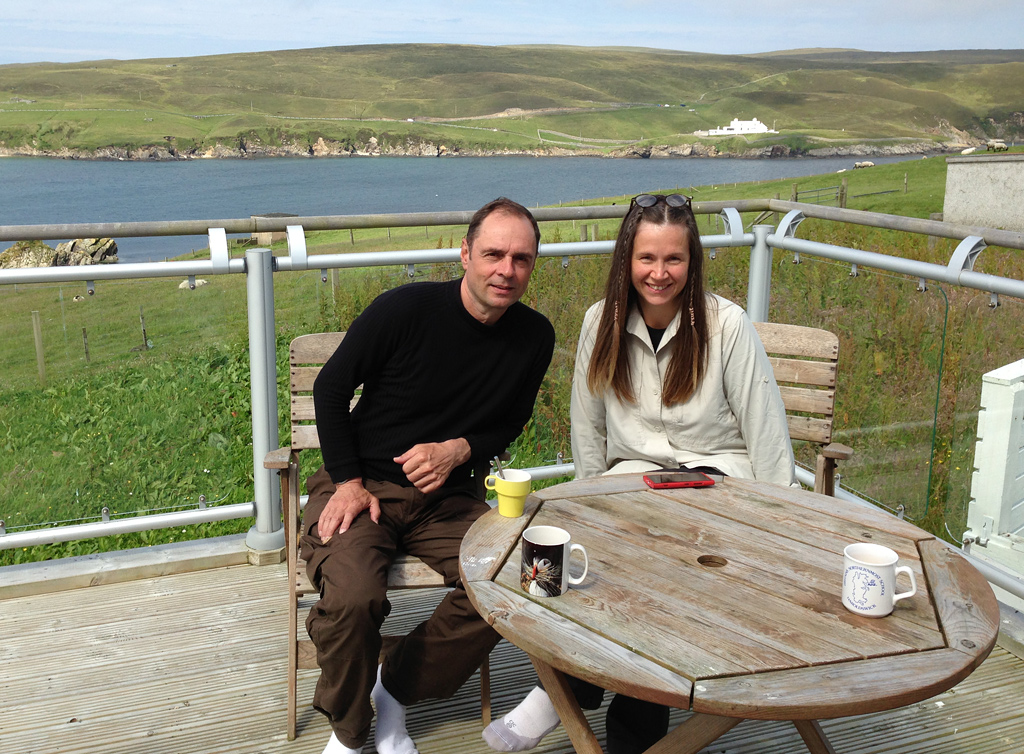
After a week on Unst under Brydon Thomason’s easy-going but unmistakeably competent guidance, I can easily confirm the rumour that Shetland is a terrific destination and Shetland Nature offer a varying and deeply satisfying range of opportunities to take excellent bird photos.
Birds are my perspective as I photograph exclusively birds, but there’s something for every kind of photographer, from landscapes and wildlife to cultural heritage, history and the way life is lived in remote areas, away from the concentrated din and clamor of urban places.
The North has been my favourite region for decades, both in my native Finland and the neighbouring Norway, and Shetland has the same distinct feel and taste that’s characteristic to the northern latitudes: there’s space, air, light, a sense of timelessness, yet it’s vibrant. There’s a lot to do in the north.
As a born and bred Shetlander, Brydon knows his territory, the birds and other wildlife, and what’s especially important, he shares a photographer’s passion and point of view. He shows a genuine appreciation for his guests and wants them to truly enjoy his beloved islands, which gives him a natural ’guest first’ attitude that helps to create a trusting and open atmosphere. Your wishes are heard and the promise in the word bespoke is genuinely delivered. Yet always with the utmost respect to nature; the welfare of the wildlife is not risked.
Brydon has also taken the experience and insight he offers photographers to another level through his self built bird-hides. By using his knowledge of the islands iconic species, some of which he operates under special schedule one license to photograph, he has innovated some truly unique and very special opportunities.
Shetland Nature offer itineraries to suit groups, hobbyists and demanding professionals. For bird photographers, it’s an exciting location as there are many interesting birds, a wealth of locations with differing landscapes and light conditions, and with the sea around, there are all kinds of weather and changing moods to play with.
We stayed in the spacious, comfortable, stylish and delightful Shetland Nature Lodge, which is uniquely situated overlooking a bay with the Hermaness Nature Reserve on the other side. The Lodge is a combination of old and new as it’s an old stone cottage all tastefully done-up and extended. It’s well-equipped with good internet connection making self-catering and lodging easy and relaxing, which all support a photographer’s raison d’être – photography.
A bit about the sites, birds and hides:
Day of Arrival
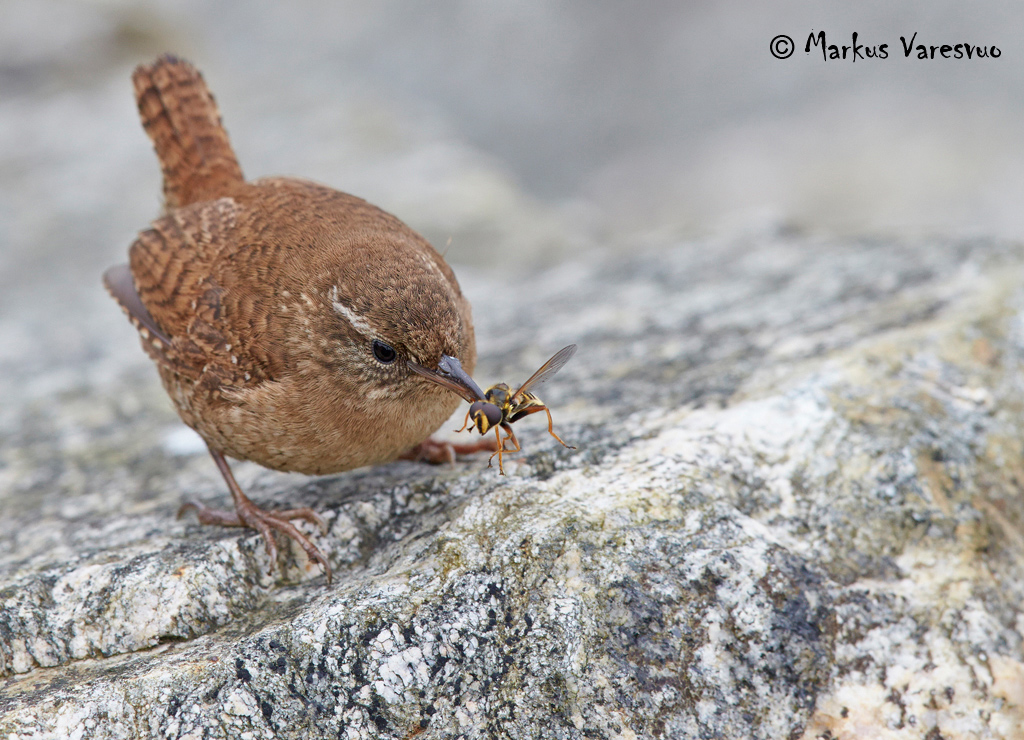
We reached the Shetland Islands on the NorthLinks ferry, which was Finns meeting Finns as the ship had been built in Finland. After getting our car from the local Bolts Car Hire, we set on the journey through the Mainland to the island of Yell and then again on a ferry over to Unst.
In Gutcher, Yell-side, waiting for the ferry to whisk us across, I had time to start bird photography. There’s a narrow stone pier, where you can shoot Gannets that come fishing, some really close. I also heard Wren calls and spotted a fledgling on the rocks begging for food and a parent bringing insects to it.
Brydon met us in Belmont on the other side and guided us through the island to its northern tip, where we unloaded our gear in the Lodge and then set out to get acquainted with the place and see some of the birds.
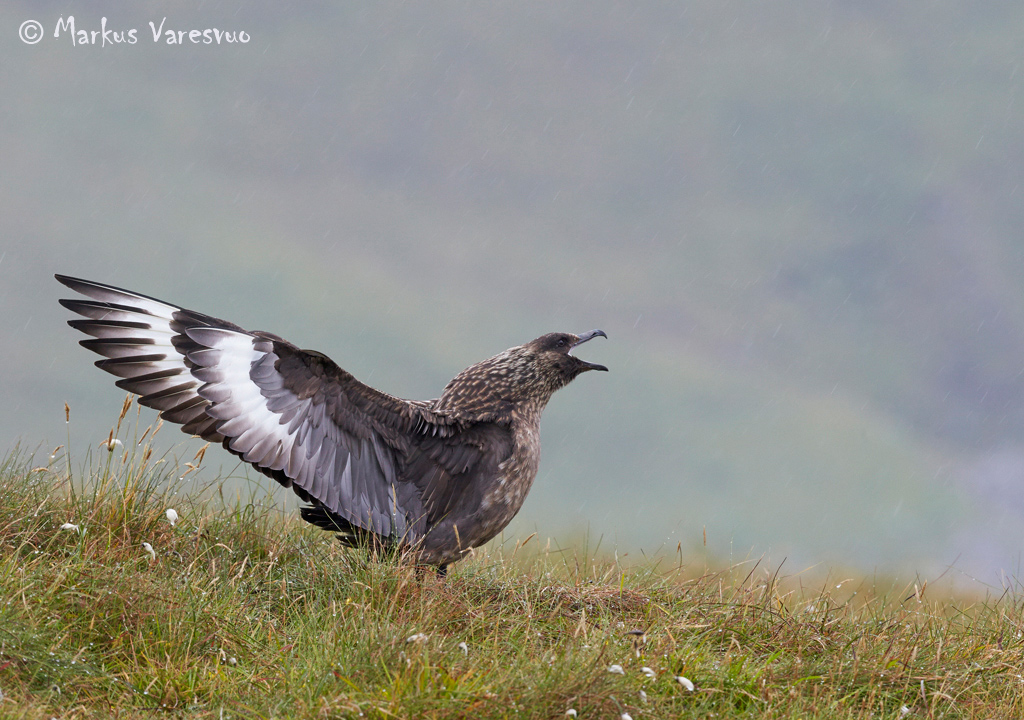
First glimpses: a hide for Arctic Skuas, by a pond, where they come to bathe; Saxa Vord with Bonxies (Great Skua), a hide on a lake shore, where non-breeding Bonxies came to bathe and party.
Back to the Lodge, where we put the fire on as it was rather grey, wettish and chilly on this day of arrival. One of the island’s many charms!
Merlin
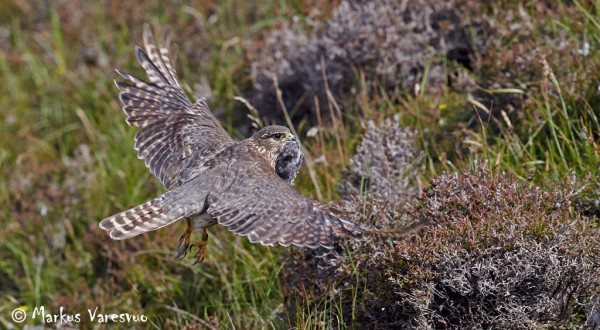
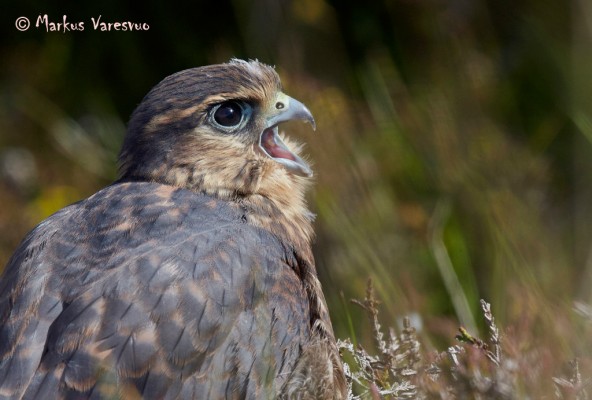
A great day with Merlins. Good views to young ones near their nest and adults on a vantage post in their breeding grounds. Photographed under licence, from a hide at a distance (long lenses necessary).
In the afternoon I had a good session with the Gutcher Gannets, studying their fishing behaviour. (And while you’re there, why not have a break in the nice Gutcher Goose Cafe at the wee ferry terminal.)
Hermaness
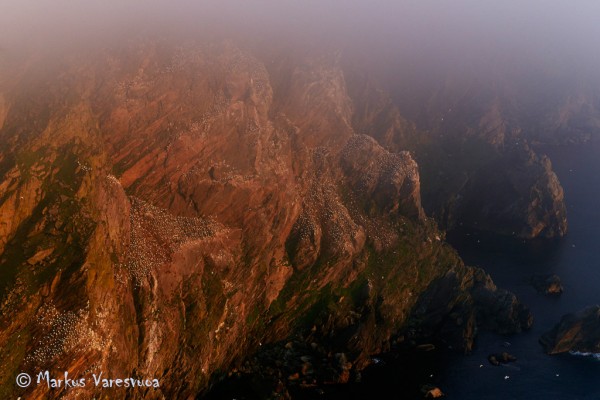
Two long sessions on the Hermaness Nature Reserve, first in the morning and then again in the evening way into the night, past midnight, and witnessing a glorious, mystical sunset with fog clouds.
Great light, many variations of it, stunning scenery, delightful backgrounds. No lack of birds to photograph.
Skuas
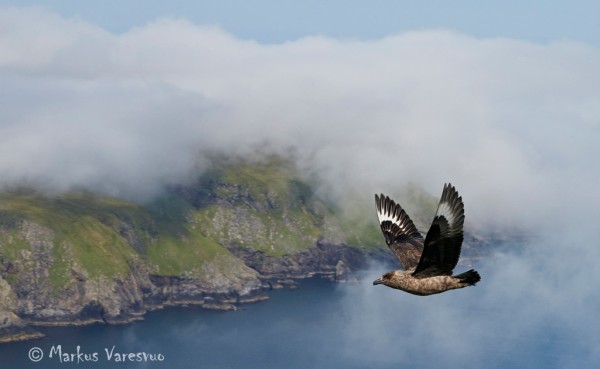
Morning sessions in Saxa Vord with the Bonxies, afternoon and evening in the Arctic Skua hide.
Gannets in a feeding frenzy, and some Guillemot moments
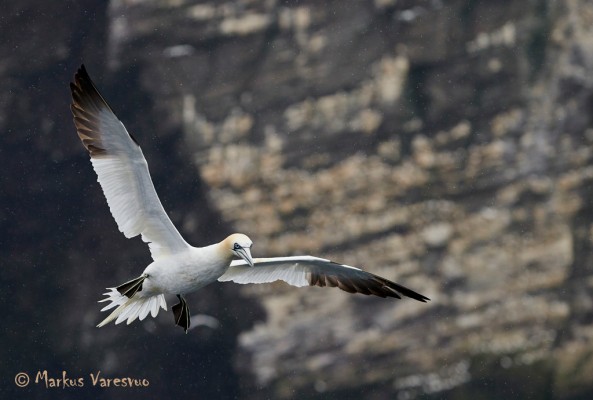
Spent the morning photographing feeding Gannets out at sea, and also a sea cliff colony. What a memorable experience, witnessing the big slender birds falling out of the sky in their hundreds, at break-neck speed, piercing water shaped as slim arrows and popping up balloon-like from the depths. You better leave planning and composing aside, shoot pretty much non-stop and hope for the best. It was fast and furious, even for an ex-sprinter.
On the way back we went to check out some Black Guillemots. It was a bleak afternoon with grey overcast skies and the beach looked empty. But Brydon knew his birds, and positioning ourselves on a big boulder we waited a while. Soon the Black Guillemots came flying in, settling close enough for easy shooting.
Red-throated Diver, and then the Moon
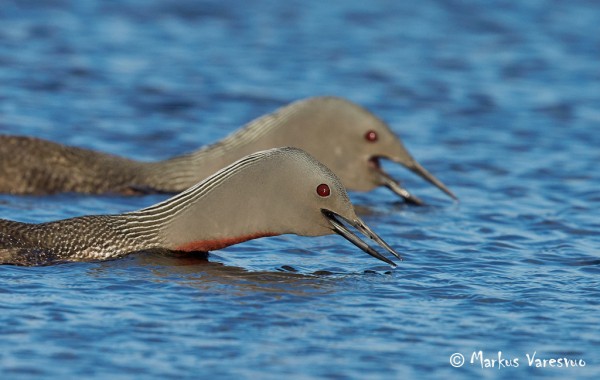
On our way over a smallish moor to and back from the Red-throated Diver hide I caught some bonus birds, which is always nice.
The Divers (shot under licence in a careful and professional setup) are on a pond that is of an ideal size and ideally located for photography – the very last rays of sunlight hit it from behind you.
The male made two fishing trips.
Coming back over the moor at midnight, we had a super moon letting us play with different ideas.
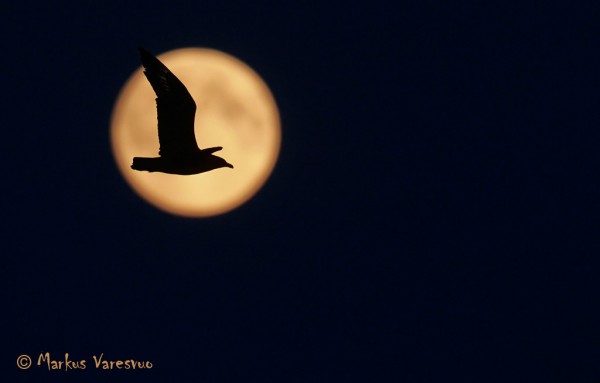
Day of Departure
On our way back to Lerwick and the journey home we stayed an extra hour in Gutcher to shoot Gannets one last time. It’s good to grasp every opportunity. The Gannets’ diving speed is incredible and to catch the bird in just the right position at just the right time is not that easy. It’s a big bird, so mostly, even if you’ve managed to get it right, you’ve either missed a tip of the wings or a tip of the bill…
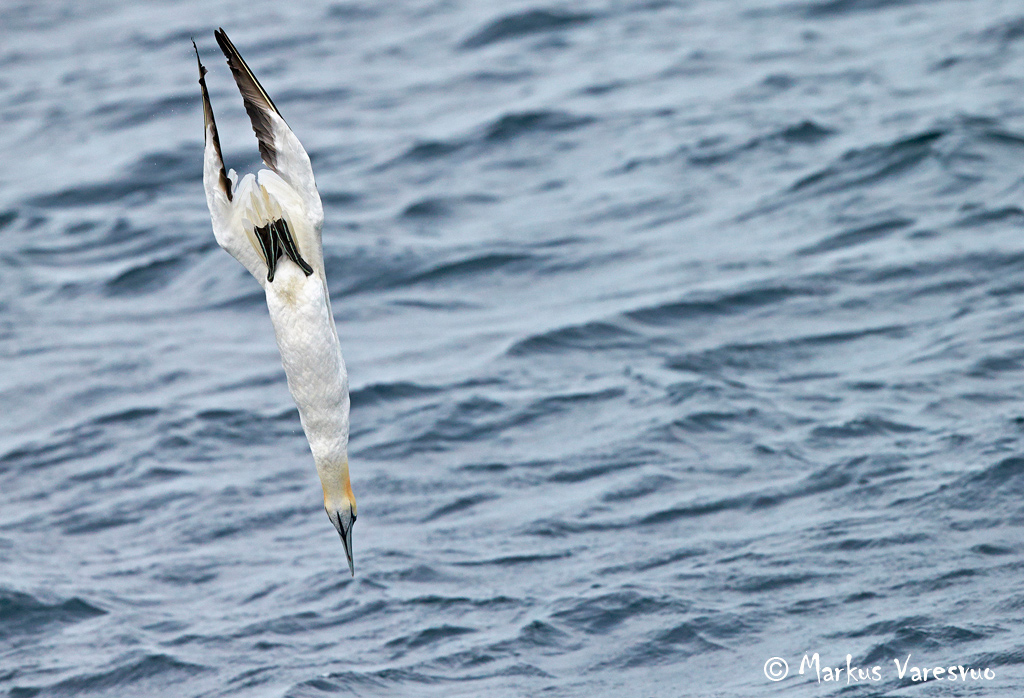
A week is just long enough to get an idea of all that Shetland’s got to offer.
Markus Varesvuo
www.facebook.com/markus.varesvuo
July 2014
Contact Brydon to arrange one-to-one photography assignments: [email protected]
Permalink
Breeding Merlins photo assignment
Posted by Brydon Thomason on Tuesday 29th July 2014 | Brydon's Shetland Nature Blog, Photography
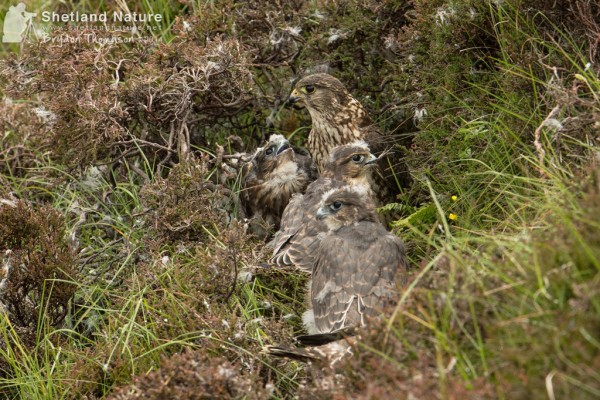
There are perhaps few ‘family groups’ of birds better or more widely recognised than birds of prey. Whether it be an eagle, a buzzard or a falcon these species carry a charisma and iconic status through all cultures of the world. The Merlin is one of Europe’s best known and Britain’s rarest breeding birds of prey. Yet with this iconic status it is a bird few see for more than a few seconds let alone get the chance to photograph. How often do you ever get the chance for example to watch a Merlin through binoculars or telescope? More likely the view you get is of its sleek and petit profile hunting as it darts across the moorland, or maybe a fleeting glimpse as it lifts from a roadside fencepost as you drive by. From a personal perspective this species is a firm favourite and has been so since childhood. It is not just their pure beauty, especially the male, but also their stealth and elusive nature which accredits them with something of an enigmatic appeal.
In the UK they are protected by law and a special schedule 1 license authorised and issued by Scottish Natural Heritage (or English Nature) is imperative to work on them at breeding sites, a privilege I have been authorised for several seasons now.
This season for the first time however (for this species), I applied for an extension on this license so that I could offer this very special assignment to photographers on my one-to-one assignments. To my knowledge I am the only photographer licensed to work with clients on breeding Merlin in Scotland (and most probably the whole of Britain) and so it is a totally unique and exclusive opportunity and one that I am very proud to offer. My sense of pride with this comes not only from the fact that I am trusted with such a responsibility (something that is quite an accolade for a nature photographer in this day and age) but also that I can share such a very special and fascinating insight into bird behaviour in a responsible and controlled way that without this license, would simply not be possible.
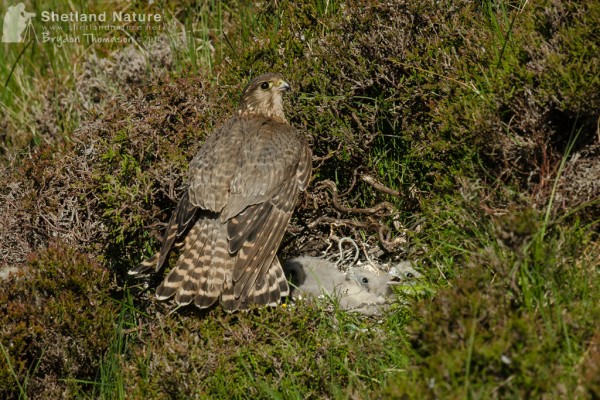
Merlin is one of Shetland’s rarest breeding species, with somewhere in the region of 30 pairs recorded each season. Their preference for remote and often difficult locations is renowned. The pair I worked on in this assignment was no exception. Logistically this site was probably about as challenging as it could possibly be, miles from any main road and over a half an hours walk across open moor and rolling hills. Then was the difficulty of using and erecting a hide on the face of a steep sided valley! From an authenticity angle however it was perfect, an unspoilt wilderness many miles from civilisation and about as secluded as it could be, nothing for miles around but the moorland they would hunt to raise their young.
Stringent caution and care is essential when working on such a species/assignment. With experience and success with them previously I do however feel a quite a level of confidence with them.
It is imperative that work must be done from a hide and the hide must be moved in stages so as they become accepting of it. Not only that but every visit I needed to be walked in and the person with me seen to leave. This season I have to give a huge thanks to Molly Michelin, a photography student on internship with us for her second season, who facilitated these over the project. It’s amazing how simple and yet how effective this technique, (which is used on species all over the world) works.
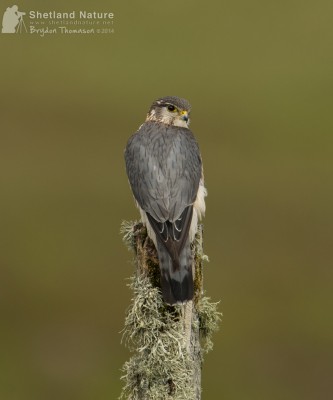
This year I was also able to work with a nice and authentic looking ‘plucking/perch post’ which worked very well, especially for capturing the very handsome male. This was an image I have dreamt of capturing for many years now – I hope that next year I can capture the food pass from him to her – an aspect of their behaviour I have never seen an image of but watched happen several times this season. Unfortunately however this takes place on the hillside, even once only two or three metres from the hide but moving the lens is not an option as they are so sharp any movement is sure to give the game away. My lens needed always to remain static on either the post or the nest. It’s always good to have something to aim for and now I can think of no better an image of these awesome little falcons, role on next summer…
It is heart-warming and extremely gratifying to say that this pair had a very impressive 100% success rate this season, laying five eggs and fledging five young.
For information on booking this assignment in 2015 visit our Merlin Bird Hide Photography page. Please note availability for this specialist one-to-one assignment is limited and solely for serious and experienced nature photographers.
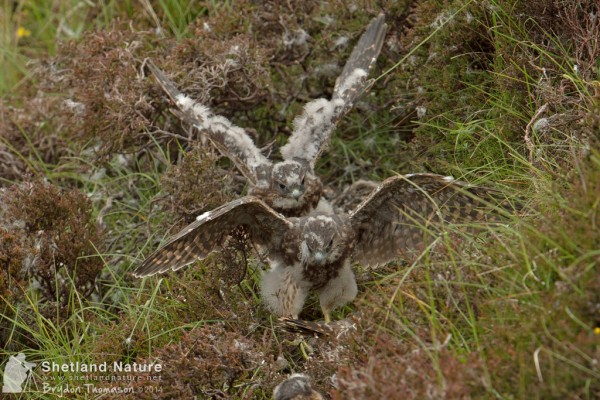
Permalink
Red-throated Diver under license photo assignment
Posted by Brydon Thomason on Friday 25th July 2014 | Brydon's Shetland Nature Blog, Photography
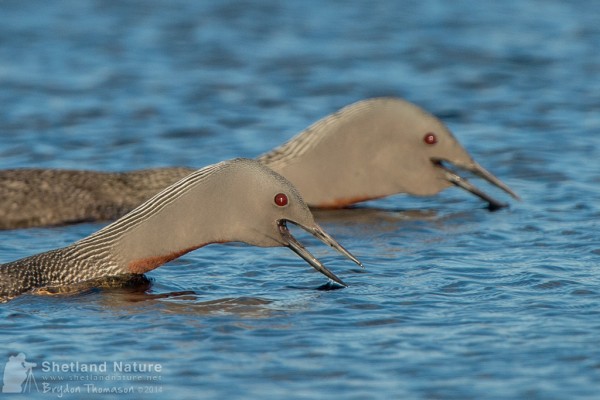
Shetland is renowned for harbouring many nationally rare and essentially northern breeding species of birds and for many, such as the elegant and evocative Red-throated Diver, it is the UK stronghold. Shetlands hundred’s of scattered lochens and moorland pools harbours somewhere up and around 400 breeding pairs of this stunningly beautiful and birds which is the highest density of the species in the British Isles. It is both their rare breeding status and their sensitivity to disturbance that ensures they are protected by law and listed as a Schedule 1 species by Scottish Natural Heritage.
I have been very fortunate to have spent several summers now working under such a license and lest year for the first time I applied for my license to be extended so that I could offer this fascinating, exhilarating and exclusive experience to photographers on my one-to-one assignments. Although there was rising interest from clients it wasn’t until I had several summers experience of working on these wonderful birds that I felt I was ready to share this truly enchanting and exciting experience and assignment. Thankfully my well established relationship with licensing authorities ensured I was trusted with this quite serious responsibility.
To my knowledge I was the first photographer to be issued with a license to work in this way with Red-throats and so this year’s guests under my strict guidance have enjoyed a privileged and unique experience indeed.
This kind of assignment simply must be done from a hide and it is of course imperative that this is so. This season I set up my hide well ahead of breeding commencing so I could hope to capture and study their courtship and display, which although I was only lucky enough to see on a couple of occasions I did at last nail at least some images of this fantastic behaviour. I also built my diver hide to have a low angle shooting hatch, which took me down to just above water level to get a nice low lying perspective on the birds, particularly on take off.
This is a bird that has fascinated me all my ‘birding’ life. It is a bird that where ever you are in Shetland throughout the summer months you will not be far away from, whether it be a bird flying overhead on route to the sea, a pair on a beautiful calm freshwater loch or maybe the distant haunting yet enchanting calls from a far. So highly regarded are they locally that they are even said to forecast the weather for us in that their calls and or flight direction could indicate rain coming (hence the name I guess!). But let’s be honest, in the Shetland we know and love the prediction of rainfall is not exactly a risky one to make! It is an endearing thought though however that they have been around long enough and have been so highly regarded as to have this association throughout the isles.
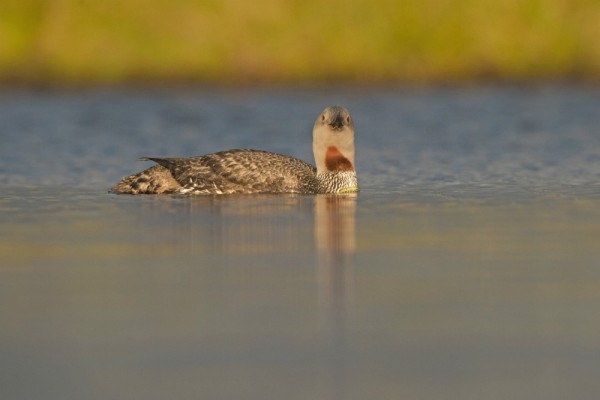
Views of Rain geese to most are often little more than a dark silhouette in the distance but close observation reveals the most exquisite detail, from the dapper pin stripe of the nape to the ruby red eye and of course the deep and almost burgundy red of their throat patch. All a fore mentioned are highly desirable attributes for any bird or wildlife photographer. To work on a pair on a breeding loch and enjoy behavioural aspect of their breeding few ever see let alone photograph and on a remote Shetland moorland is simply a dream assignment to most.
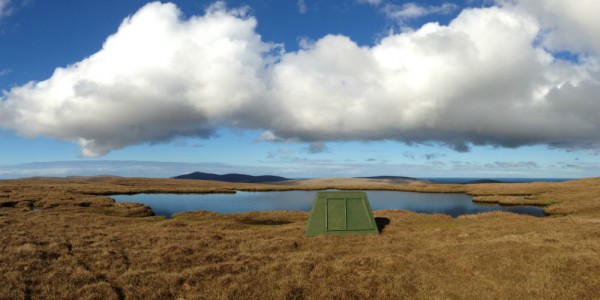
Read more about our Red-throated Diver photo assignment opportunities
Permalink
Breeding Ravens photo assignment
Posted by Brydon Thomason on Friday 25th July 2014 | Brydon's Shetland Nature Blog, Photography
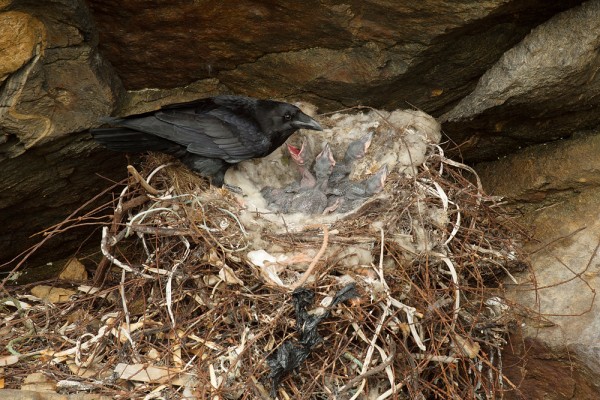
The bird family group corvidae or more commonly known in English as corvid’s are truly fascinating and much admired. Generally speaking, crow’s in particular carry something of a symbolic status through the histories of many and in fact probably most cultures. There is something very powerful, even mythical about their demeanour and this is especially so for the Raven. When researching and writing an article on them last year I came upon a fantastic piece of writing by Jessie M. E. Saxby in 1893, which includes notes by W. A. Clouston, which I felt summed them up beautifully:
“Those who have studied the Raven can well understand how the Sea-kings of the North took him for their emblem in preference to all other creatures”.
“The lordly bird, dwelling aloof in some inaccessible precipice, floating silently on black wings over the heads of more common creatures, dropping with stern, implacable ferocity on his prey, calmly croaking of doom when the sun shines, rejoicing in a storm, haunting the footsteps of death, feasting on the dead: well might he be taken as the symbol and companion of Sea-rovers, whose sable flag was the terror of nations, whose Raven ensign seldom drooped before the banner of a foe. The Raven was held sacred by the Vikings. When setting out on marauding expeditions, the Raven was, with many ceremonies, let loose, and where he led the Norsemen followed, believing that their Bird of Omen would lead to some scene of triumph”
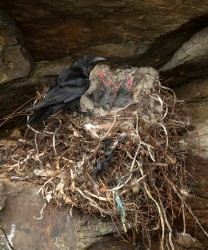
It is a combination of this iconic status, their sharp witted nature and their undeniable beauty that make them such an appealing subject for a photo assignment. Here in Shetland we are fortunate to have a fairly good population breeding, estimated at over 200 pairs just over a decade ago. Each year I see many pairs nesting at various sites around Shetland and have had my eye on several nest sites which are suitable for hide work and this spring worked on a cliff-nesting pair here on Unst.
Nest sites/territories range from the high sea cliffs, inland quarries, steep-sided and heathery inland gullies and even pine tree plantations so a good deal of thought and planning needs to go into choosing a suitable site and this site is ideal. Quite remote (but within a reasonable walking distance) on cliff face about 20m high with an opposite facing cliff where my little self-built one man wigwam hide sitting facing it around 30 to 40m across from it. As is the case for nearly all my hide work, I use my own purpose/self-built constructions to work from and at a site like this especially sat on the edge of a Shetland cliff top is no place for a pop-up built for a woodland!
This kind of work takes weeks of work before you ever even look through your lens. Thankfully I already had a hide built (my one-man wigwam) which was ideal for the task but even then I had to get it to the site, which without ‘blood, sweat and tears’, (well, almost all three of those!) and of course quad and trailer-would not have been possible. Even the logistics of getting the hide to the nearest ‘end of the road’ and then the quad there too, takes time and then there is the graft of rumbling the hide on and off. As is the case for any hide work, especially nest site work, I start off at least two to three times further away from the nest as I plan to end up positioning the hide. Then I move it closer in stages, maybe a week between. This allows time for the birds to accept the wooden box and to date; this has always worked with several different species now.
I personally find Ravens, or ‘corbie’s’ as we call them here, extremely fascinating and exciting and also enjoy working on them at close quarters, from a hide during winter. That was indeed an exciting assignment to watch their behaviour when flocking in to feed on the carcass of dead sheep. But in many ways this was just the beginning of the story I wanted to tell. What I love to do is tell a story, a ‘circle of life’ of each of Shetlands most iconic species through a portfolio of images of their behaviour.
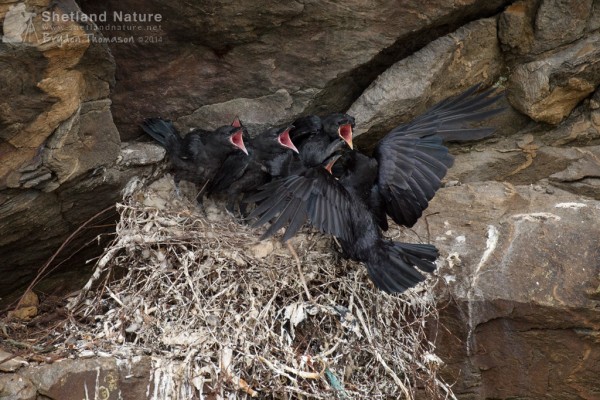
Without a hide no right minded Raven would come back and land at their nest. ‘Walk-ins’ are essential to try to trick nesting birds into thinking that a human has just walked to the hide and then walked away again. I have someone walk to the hide with me, in I go and then they leave. I have often heard it said that corvid’s can actually count so therefore can’t be tricked in this way. Thankfully, this pair seems to have no better grasp on maths than I do and so the walk-in and walk-out method worked a treat.
It really is fascinating to watch how such a sharp witted, notoriously unforgiving predator and a scavenger as the Raven can show such an attentive and sensitive side. I find it such a thrill to watch and photograph such intimate behaviour as the parents tend to their chicks. This behaviour something that is simply not possible without working from a hide and so yes, all that hours, days and even weeks of work and planning are worth every pain staking moment!
View Raven photography opportunities
Permalink
Bird Hide Photography – The Work Behind the Scenes
Posted by Brydon Thomason on Thursday 24th July 2014 | Brydon's Shetland Nature Blog, Photography
Bird hide photography is now very well established as an almost prerequisite to an itinerary for travelling nature photographers throughout Europe and beyond. Across a growing number of photo-tour companies there is a plethora of opportunities, subjects and species which can be worked on from hides. The imagery from such innovations of course speak for the selves as they tend to show species, (often shy and secretive) illustrating exciting, intimate and awe-inspiring behaviour- all of which is of course extremely popular to both photographers and admirers of natural history photography.
The whole concept of this approach to nature photography is a huge motivation for me and I find it exciting, emotive and very rewarding. It is this kind of photography I really like to work on as I love the whole process of the assignment, from getting to know how a particular species use a certain site and planning where and if a hide will work. Just to even simply watch wildlife without them knowing you are is simply magical in itself. Then the building of a hide to suit the site and subject. Building the actual hide is just as much part of the overall gratification as the actual taking of images for me. As a time served joiner/carpenter it is a really good fit to combine these skills and knowledge of species and sites.
Some of the sites I have innovated and established have taken a few years planning and labour, you could even go as far to say ‘blood, sweat and even tears!’ (well nearly at least!) What I tend to do is build semi permanent and purpose built wooden kit hides which can be transported to site using quad and trailer, or even tractor with one of the larger more permanent hides. It has to be said of course that these have improved over the years and I have learned that shop bought ‘pop up’s’ are just not for Shetland – I call them ‘blow aways’ instead!
Two of my hides are constructed and just slide on or off trailer, like my two man diver hide and my one-man-wigwam, which is just small enough to drag/slide across moorland, but over a short back aching distance! Often there is days of work goes into each assignment in the repeated visits to move a hide over a period of weeks which is essential, especially at breeding sites.
Eventually over the past few seasons I have built a selection of hides which I can move around to suit subject and seasons and they can therefore play a very productive role in itineraries and workshops I run or collaborate on. In 2014 for example I really enjoyed working with Markus Varesvuo on Merlin, Red-throated Diver, Arctic Skua and Great Sua. I also had a film crew use my Long-tailed duck hide when we worked on ITV’s Alison Steadman’s Shetland.
Often now visiting photographers who perhaps want to do their own thing are also booking hides for exclusive use, such as the Arctic Skua and Great Skua club sites in the summer which only need a ‘walk in’. Seeing the potential in this approach to photography and photo-tours and creating a niche here in Shetland is something I have found very exciting and I am very much committed to developing these assignments further and working on other species and seasons.
Permalink
Shetland Nature Photo Competition 2013
Posted by Brydon Thomason on Friday 31st January 2014 | News, Photography
We are delighted to announce the results of our 2013 guest photographer competition and thanks to our very good friends at Earth in Focus, (who judged the competition) we have a winner!
All the images entered were really beautiful and showed just how fantastic and exciting Shetland is for photographers. The variety of wildlife, habitats and landscapes were illustrated especially well in the first, second and third choices.George Stoyle, Earth in Focus
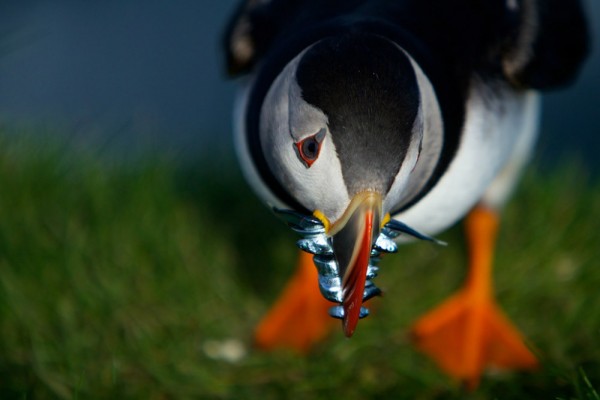
Italian photographer Mauro Mozzarelli won first prize, (an exclusive stay in our stunning self catering Shetland Nature Lodge) with his stunning portrait of an Atlantic Puffin entering its burrow with its catch of sand eels, taken on a bespoke one-to-one itinerary in early August.
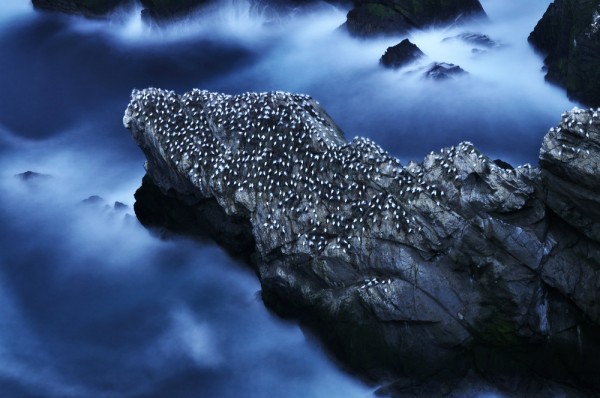
In second place was Ruth Asher’s atmospheric shot of one of the Gannet Stacks at Hermaness, taken on our ‘Shetland Autumn- Nature, Ligfht and Land‘ workshop.
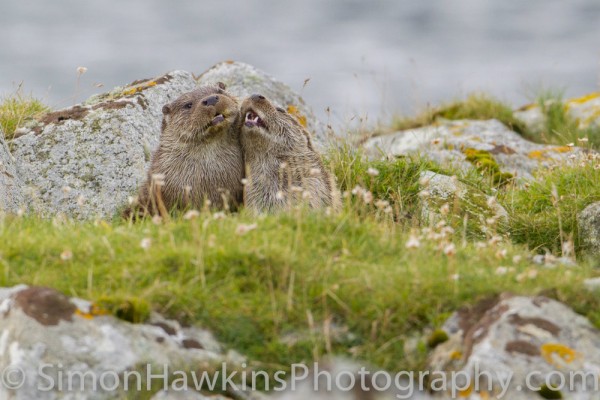
In third place was Simon Hawkins’ fabulous Otter family portrait, showing the intimate bond between mother and cub as they groom at a grassy headland lay up, taken on a one-to-one Otter Photography itinerary in September.
Permalink
Shetland Nature Photography – Brydon Thomason 2013 Image Gallery
Posted by Brydon Thomason on Thursday 9th January 2014 | News, Photography
A seasonal selection of some of my own photography in 2013. This selection is a mixture of some of my favourite moments, encounters and projects throughout the year here in Shetland.
Needless to say, I consider myself extremely fortunate to have access to such exciting subjects but as is so often the case, I so wish I could spend more time on so many of these – in fact all of them! I really enjoy working on project photography especially and in particular ‘species specific assignments’ and to do so I often innovate hides to work from.
My Arctic Skua bathing hide worked really well this year and was a new build from last years. New to this year was my Long-tailed Duck hide too, which was really awesome. Also new to this year was a Raven hide which was really fantastic but they are so, so sharp; getting into the hide under cover of darkness was essential or they just didn’t come in!
These are all available for ‘day hire’ and can all (and do) feature in the itineraries I lead.
Unfortunately, due to so many commitments and our busiest season so far, although I had a schedule 1 license for my fourth season running, I didn’t manage to continue my work on Breeding Merlin or Red-throated Diver – which I really missed. Both those spectacular species were the highlights of the previous year and I am looking forward to continuing those projects this season and am delighted and privileged to be able to do so.
As well as sharing these images it hopefully gives photographers interested in the one-to-one itineraries I offer the chance to see what subjects are possible throughout the year here. Here are links to a couple of these bespoke itineraries from 2013:
And here also is a link to a gallery of this years Otter Photography guests on one to one itineraries:
Permalink



